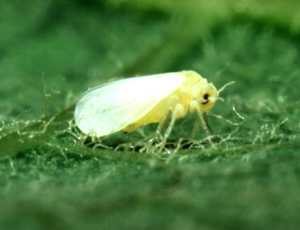Work Hard, Smart To Put Whiteflies Away
 Whiteflies are one of the most important pests of tomatoes in Florida because it vectors tomato yellow leaf curl virus (TYLCV). While there are several products labeled for control of the whitefly, rigorous attention must be paid to modes of action and proper rotation to help avoid the potential for resistance.
Whiteflies are one of the most important pests of tomatoes in Florida because it vectors tomato yellow leaf curl virus (TYLCV). While there are several products labeled for control of the whitefly, rigorous attention must be paid to modes of action and proper rotation to help avoid the potential for resistance.
Hugh Smith, an entomologist with UF/IFAS, presented pointers on managing whiteflies during the 2013 Florida Ag Expo. “There are quite a few predators of whiteflies, but since our main concern is the pest transmits TYLCV, we don’t rely on biocontrols very much to manage them,” he said. “We rely on some other key strategies.”
Those strategies include insecticide applications and cultural practices. “Obviously, we need to start with clean fields,” said Smith. “Clean culture between crops is essential for managing this disease. The main source for TYLCV is other tomato fields that have been infected, those not properly disked, and volunteer plants that are infected.”
While cultural practices are important, Smith noted insecticides are a critical tool in managing whiteflies, so proper timing and rotation of modes of action is important. “Our key insecticides have been the neonicotinoids since the 1990s for managing whiteflies,” he said. “It is important to remember all these products are in Insecticide Resistance Action Committee (IRAC) group 4A. We need to be mindful these are all the same mode of action.”
Smith noted the life cycle of a whitefly is about five weeks, which is an important component of chemistry rotation. It is recommended to avoid using the same IRAC mode of action within the same generation of whiteflies. “We stress using the neonicotinoids in the first five weeks of a tomato crop then shifting to other modes of action,” he added.
Smith also discussed a new active ingredient Cyazypyr (brand names Verimark and Exirel, DuPont Crop Protection), which has recently received EPA registration. “This is a very interesting material in the IRAC 28 group like Coragen and some others, but it has a wider spectrum of activity,” he said. “When looking at the second five-week window, a soil applied Verimark might be very useful in this time window.”
Thanks to DuPont Crop Protection for sponsoring Florida Ag Expo Extended Coverage.









